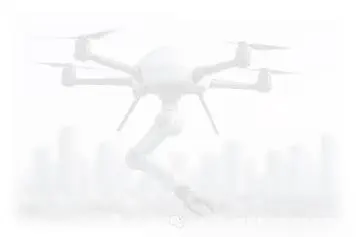CFP: Aerial Flying and Manipulation

Aerial Flying and Manipulation: Aerial Grasping
SPECIAL SESSION
Aerial Flying and Manipulation: Aerial Grasping
Organizers
Dr. Nashit Arshad (nash@sztu.edu.cn), Shenzhen Technology University
Dr. Mingqi Chen , Shenzhen Technology University
Assoc. Prof. Xiangdong Meng , Nanjing University of Posts and Telecommunications
Prof. Meng Li , Shenzhen Technology University
Prof. Qiang Li , Shenzhen Technology University
Overview
As aerial robots move beyond observation to active physical interaction, aerial grasping has become a frontier in robotics research. This capability unlocks a range of high-impact applications, from autonomous inspection and maintenance to disaster response, logistics, and agriculture, where access, agility, and autonomy are critical.
This special session aims to gather cutting-edge research from around the world to address these challenges and advance the science and engineering of aerial manipulation.
We invite contributions that span hardware, intelligent control, vision-guided grasping, bio-inspired systems, and real-world deployments. Through this session, we seek to foster collaboration across disciplines and accelerate innovation in this rapidly evolving field.
Scope
Design and Control of Aerial Manipulators
Mechanical and control co-design for aerial platforms with arms, grippers, or tendon-driven end-effectors.
Perception and Planning for Aerial Grasping
Vision-based and multi-modal sensing for object detection, grasp planning, and real-time control in dynamic environments.
Learning-Based Approaches for Grasping in Flight
Application of reinforcement learning, imitation learning, and foundation models to improve grasp success and adaptability.
Cooperative Aerial Manipulation Multi-drone systems performing joint manipulation tasks such as lifting large or articulated objects.
Bio-Inspired Grasping in Aerial Platforms Biological paradigms (e.g., birds of prey, insects) used to design agile and efficient grasping strategies in flight.
Aerial Grasping in Complex Environments Systems designed to grasp in cluttered, confined, moving, or GPS-denied environments such as forests, tunnels, or urban ruins.
Grasping under Flight Dynamics Constraints Stability-aware grasp planning, force control, and motion compensation under aerodynamic perturbations and limited thrust.
Real-World Applications and Benchmarking of Aerial Grasping Stability-aware grasp planning, force control, and motion compensation under aerodynamic perturbations and limited thrust.
Manuscript preparation
We invite researchers, engineers, and practitioners to submit papers related to the topics of these special sessions. The submission details are as follows:
Submission Deadline: 30 June 2025
Notification of Acceptance: 11 July 2025
Final Paper Submission: 18 July 2025
Conference Dates: 10 August 2025
Important Note: Please fill in “nd6h6” when submitting the manuscript.
All papers submitted for review should strictly follow the IEEE conference paper format requirements. (Submission website: http://ras.papercept.net/conferences/scripts/start.pl) The conference program committee will review the technical papers submitted by the submitters based on the academic level of the papers, and select the “Best Conference Paper” and “Best Student Paper”. All selected and registered papers will be read and published at the conference, all will be included in the IEEE Xplore database, and have the opportunity to be included in EI retrieval.
For further manuscript preparations please follow
https://www.worldrobotconference.com/sara/contributions/callforpaper/
For manuscript submission please follow:
https://www.worldrobotconference.com/sara/contributions/initialsubmissioninstructions/